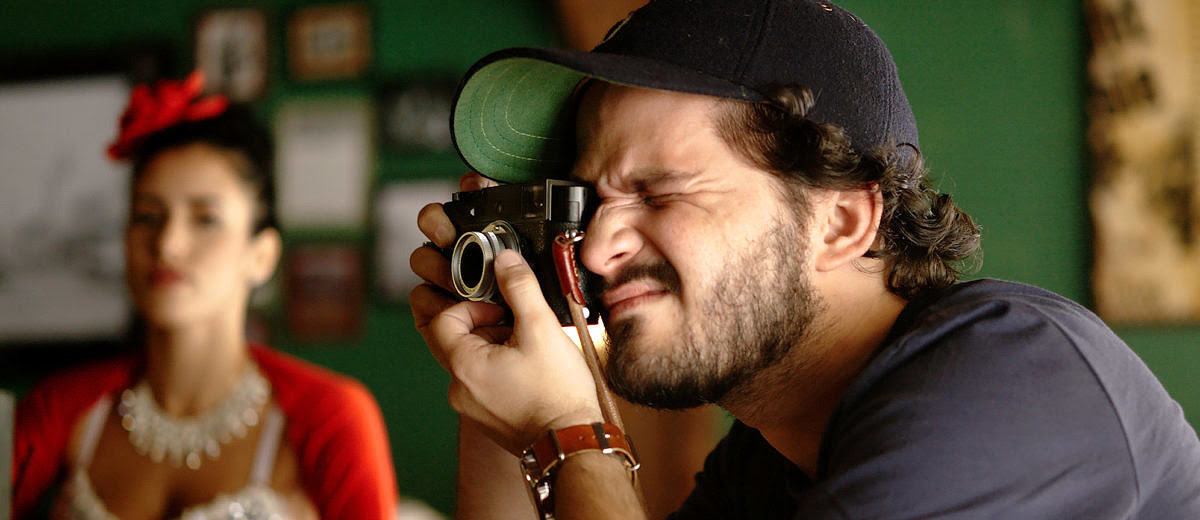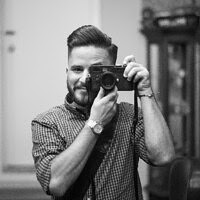


 Luis Mora
Luis MoraFor other articles on this blog please click on Blog Archive in the column to the right



 Luis Mora
Luis MoraFor other articles on this blog please click on Blog Archive in the column to the right
By José Manuel Serrano Esparza
In 1986, seventeen years after working as a successful photojournalist for The New York Times, Associated Press, Vogue, Vanity Fair, Daily News, The Wag, News Day, Food Patch, Woman´s News, etc, and counselled by her great friend Cornell Capa (Robert Capa´s brother, who had founded the International Center of Photography in New York in 1975), Claire Yaffa made the decision to change from a medium format 2 1/4 x 2 1/4 Rolleiflex 2.8f K7F Type 1 with Carl Zeiss Planar 80 mm f/2.8 lens and a 35 mm Nikon FM2 (a remarkable 100% mechanical camera featuring shutter speeds up to 1/4000th second and flash X-sync of 1/250th second, highly resistant vertical metal shutter blades made of lightweight titanium and able to work at extreme temperatures between -40º and +50º C) with Nikkor 50 mm f/1.8 Ai lens and MD-12 motordrive as main photographic gear
to a Leica M6 rangefinder camera, model which had been launched into market only two years before.
Cornell Capa, who along with Nikon F reflex system had been using rangefinder cameras for many decades, particularly Contax II from 1936 and a wide variety of Leica M rangefinder models from mid fifties, convinced Claire Yaffa to buy two Leica M6 cameras,
explaining her that though being a limited photographic system in terms of the range of focal lengths compatible with its core rangefinder principle ( roughly between 28 mm and 135 mm objectives),
it was by far the best one for the kind of pictures she made from very near distances, thanks to the tiny size and weight of camera body and lenses,
the almost imperceptible whispering sound generated by its horizontally travelling cloth shutter on being released, its unmatched levels of discretion and immersion in the core of action during the photographic act, its second to none handling convenience and its flawless optimization to unobtrusively get pictures in which human interaction takes place, with the added bonus of yielding peerless image quality, thanks to the uncompromising optomechanical level of its non retrofocus M lenses.
This way, mid eighties were a turning point in Claire Yaffa´s photographic career, because from then on, she would make vast majority of its images
with Leica M6 rangefinder cameras coupled to 35 mm, 50 mm, 75 mm and 90 mm lenses, managing to do her landmark reportage in Hart Island New York Potter´s Field in 1990, as well as completing amazing photobooks like Reaching Out, The Problem of Child Abuse and Rehabilitation (1987), Light and Shadow (1998), A Dying Child is Born : The History of Tracy (1992), The Story of New York Foundling Hospital (2001) and others.
But simultaneously, from mid nineties, it dawned on Claire Yaffa that both Cornell Capa and his wife Eddie Schwartz, great friends of hers, were approaching to the ends of their days.
Cornell Capa (the youngest of Julianna Henrietta Berkovit´s sons) had been born in Budapest (Hungary) in 1918 and Edith Capa had also been born in Budapest in 1913, so the former was eighty years old in 1998 and the latter eighty-five.
Therefore, she decided to get as many portraits of Cornell Capa as she could between mid nineties and early 2001, to have a good remembrance of their mutual great and sincere friendship.
And to properly attain this aim, she used a non stellar performing but highly efficient for portraiture combo : a Leica M6 coupled to a single coated 4 elements in 4 groups Tele-Elmarit-M 90 mm f/2.8 (1974-1990, far better than the 5 elements in 4 groups Tele-Elmarit-M 90 mm f/2.8 first version manufactured between 1964 and 1974, as well as sporting less weight and a slimmer lens barrel) without any haze in its rear group of optical elements.
Evidently, this lens lags behind the Elmarit-M 90 mm f/2.8 (1990-2008) in terms of widest aperture, resolving power, sharpness and contrast, a difference that would be infinitely bigger in comparison to the benchmark 5 elements in 5 groups Apo-Summicron-M 90 mm f/2 ASPH, which was introduced in 1998, particularly at the widest apertures.
And obviously, it can´t compete with the capabilities of the also 4 elements in 4 groups Macro-Elmar 90 mm f/4 (introduced in 2003 and likewise featuring single coating and very compact dimensions, with a length of 65.77 mm and a weight of 222.6 g, though being less luminous) when portraits with a lot of detail are needed.
But sometimes, a lens can be too sharp, depending on what you are using it for.
As a matter of fact, broadly speaking, obtaining stratospheric resolving power, sharpness and contrast hasn´t usually been top priority in the scope of portraits, but capturing the atmosphere of the instant, the mood prevailing at the moment, getting nice bokehs highlighting the subjects and specially drawing the key personality traits of the photographed person.
In addition, Claire Yaffa knew that some optical imperfections of the Tele-Elmarit-M 90 mm f/2.8 (1974-1990) designed by Walter Mandler at the Ernst Leitz Factory in Midland, Ontario (Canada), became significant assets to get a kind of dreamy portraits with character : its softness in sharpness and contrast on the corners at the widest f/2.8 and f/4 apertures, its incredible handling convenience because of its very reduced dimensions and weight (length of 62 mm, 51.5 mm diameter and a weight of 225 g) for its focal length, and above all, a unique smoother rendering at the largest f/2.8 and f/4 diaphragms with good ability to capture subtle nuances.
This way, in spite of being flare prone and suffering from a lack of uniformity of performance between center, borders and corners in comparison to much modern 90 mm aspherical lenses, the Tele-Elmarit-M 90 mm f/2.8 is a bang for the buck when it comes to getting portraits, particularly leveraging black and white films like the Kodak Tri-X 400 (with which it achieves a remarkable symbiosis) used by Claire Yaffa to do the pictures of Cornell Capa during nineties.
Anyway, a 90 mm lens can be hard to focus on a rangefinder camera, including the Leica M6 with a 0.72x viewfinder magnification used by Claire Yaffa to photograph Cornell Capa, since the bright-line frame for the tele lens inside the camera is a tiny rectangle inside the 28 mm one.
Therefore, the amazing compactness and very low weight of the Tele-Elmarit-M 90 mm f/2.8 was a great advantage to comfortably shoot handheld her 0.72x viewfinder magnification Leica M6 and focus carefully and accurately in comparison to other much bigger and heavy portrait lenses at the time which were more cumbersome to handle and brought about more fatigue in the photographer on being used, like the single coated 5 elements in 4 groups Summicron-M 90 mm f/2 1980-1998 (length of 79 mm and weight of 690 g), the 7 elements in 5 groups Summilux-M 75 mm f/1.4 1980-2007 (length of 80 mm and a weight of 560 g) and the Apo-Summicron-M 90 mm f/2 ASPH manufactured from 1998 (length of 78 mm and a weight of 660 g).
Because a 0.72x magnification Leica is not as good as a 0.85x or 0.91x (Leica M3) on precisely focusing with a 90 mm lens, and the excellent Leica 1.25x VF magnifier to be attached to the camera´s eyepiece turning the 0.72x VF magnification into a 0.90x one wouldn´t appear until 2001.
In addition, the Tele-Elmarit-M 90 mm f/2.8, a very discreet lens for its focal length, boasted some further virtues like a medium contrast (lower than Summilux and Summicron lenses, which had the upper hand for colour photography in this regard) optimized for black and white photography, a very nice and soft unobtrusive bokeh, together with a pretty well damped and silky smooth focus and aperture rings, so any photographer can revel in using it shooting handheld.
Therefore, the symbiosis between a Leica M6 and the Tele-Elmarit-M 90 mm f/2.8 lens offered a raft of fundamental advantages and traits for Claire Yaffa´s most important goal on photographing Cornell Capa : to capture him mostly inside the ICP of New York,
depicting his true generous and cheerful nature, together with his genuine expression the best she could within his usual working place, devoted to the memory of his beloved brother.
For other articles on this blog please click on Blog Archive in the column to the right